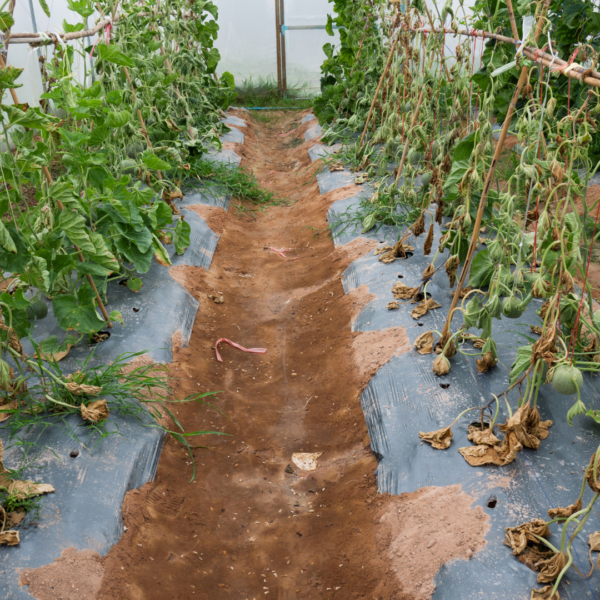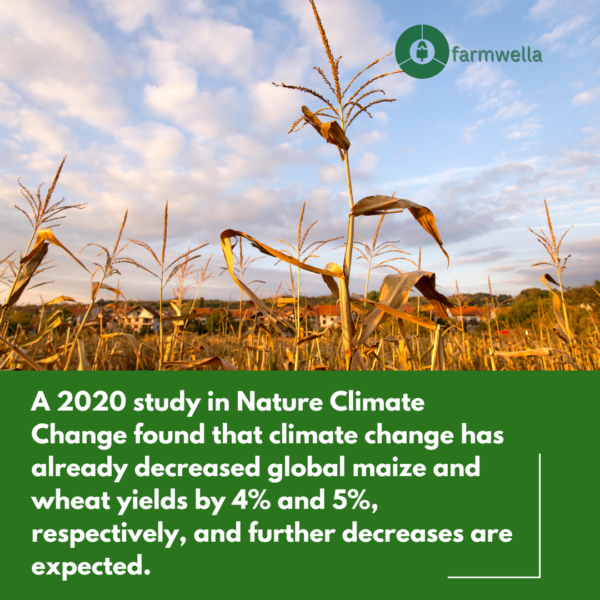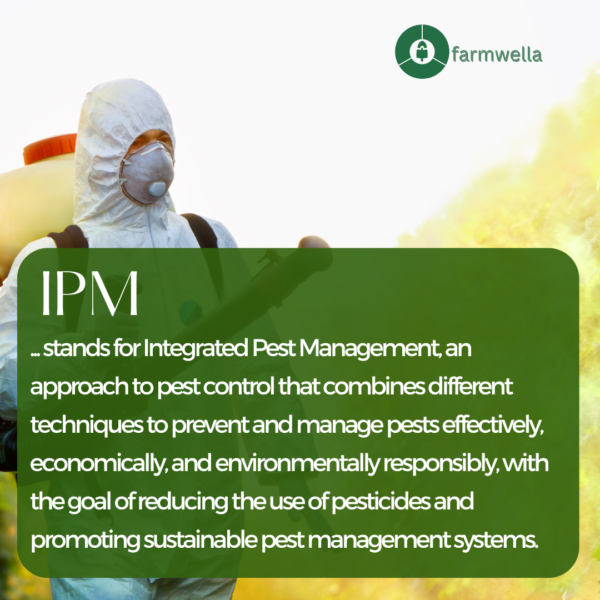Crop failure is an issue that many farmers face, just like how any business may have its own downtime.
To put it simply, crop failure is when the plants on the farm do not produce the expected amount of edible fruit, seeds, or leaves, or if they are damaged, killed, or destroyed. However, it’s important to note that minor issues that do not affect the whole harvest cannot be considered crop failure.
Crop failure can be a severe problem, and the reasons why crops may fail can vary from farm to farm.
In this article, we’ll discuss some of the factors that could be contributing to crop failure on your farm. We’ll also highlight the symptoms you may notice and offer some of the best ways to mitigate crop failure.
But first, it is crucial to understand how devastating crop failure can be for your farm, even if you haven’t experienced it yet. This knowledge will help you take steps to prevent any factors that could lead to it. So, let’s dive in and explore the effect crop failure can have on your farm.

Effects of crop failure on your farm
Reduced productivity
If a substantial part of the crops fail, farmers may have to allocate additional resources, like time and money, to replant the crops or find alternative sources of income.
This can divert resources from other crucial tasks such as harvesting or maintaining the land, leading to reduced productivity in the long run.
Insufficient food supply
Crop failure can cause food shortages in regions where crops are essential for people’s sustenance. This can lead to malnutrition, hunger, and even famine, which can have a devastating impact on the health and well-being of communities.
Financial setback
Crop failure can significantly impact a farm’s financial stability. When a crop fails, farmers may lose income, making it challenging to pay bills, repay loans, and sustain their operations. This can result in reduced profits, bankruptcy, and even foreclosure.
Identifying the causes of crop failure on your farm and how to mitigate them
1. Poor soil health
When it comes to soil health, it’s crucial to know that healthy soil is the foundation of any successful crop. But how can you tell if your soil is healthy? Well, there are some symptoms that you can look out for that may indicate that your soil is not in good condition:
- Poor drainage: If your soil is compacted or has poor structure, it can lead to poor drainage. This can cause water to accumulate in the soil, which can drown plant roots and lead to disease.
- Nutrient deficiencies: If your soil is lacking in nutrients, your crops will not grow to their full potential. Symptoms of nutrient deficiencies include stunted growth, yellowing leaves, and poor fruit set.
- Low microbial activity: Healthy soil should be teeming with microorganisms, such as bacteria, fungi, and protozoa. These microorganisms help to break down organic matter and make nutrients available to plants. If your soil has low microbial activity, it can lead to poor nutrient availability and plant growth.
So, how can you address these soil health issues? Here are some actionable steps that farmers can take to improve their soil health:
- Conduct soil testing: Soil testing can help you understand your soil’s nutrient levels, pH, and other critical parameters. This information can help you make informed decisions about fertilization and soil amendments.
- Crop rotation: Crop rotation involves planting different crops in a particular field each season. This can help to break up disease cycles and improve soil structure.
- Cover cropping: Cover cropping involves planting a non-cash crop in a field to improve soil health. Cover crops can help to build soil structure, increase nutrient levels, and improve microbial activity.
- Organic matter additions: Adding organic matter to your soil, such as compost or manure, can help to improve soil structure, increase nutrient levels, and promote microbial activity.
By taking these steps to address soil health issues, farmers can improve their crop yields and ensure the long-term health of their soil.
2. Poor water management system
Water management is a key factor in crop production, as the right amount of water is essential for crop growth. Poor water management can cause a range of issues that affect crop yield. Some common symptoms of poor water management include:
- Wilting or drying of crops due to inadequate irrigation
- Root rot and water-related diseases due to overwatering
- Soil erosion due to excessive runoff
- Salinization due to overuse of water
To address these issues and improve water management, farmers can take several actionable steps, including:
- Monitor soil moisture levels regularly to ensure that crops receive the appropriate amount of water
- Use drip irrigation systems to deliver water directly to plant roots, minimizing water waste and reducing the risk of diseases caused by standing water
- Install drainage systems such as ditches, pipes, or tiles to prevent waterlogging and soil erosion
- Use cover crops and other soil management practices to improve soil structure and increase water retention
- Practice crop rotation to reduce water use and improve soil health.
3. Unpredictable climate and weather

Climate and weather can make or break a crop. Unpredictable weather events can wreak havoc on crop production, leading to reduced yields or even complete crop failure.
It’s essential for farmers to understand the symptoms of unpredictable climate and weather on their crops so they can take the necessary steps to mitigate these risks. Some symptoms of unpredictable climate and weather on crops include:
- Stunted or slow growth
- Wilting or drooping leaves
- Yellowing or browning of leaves
- Reduced fruit or vegetable production
- Damage or destruction due to extreme weather events
To mitigate the risks associated with unpredictable climate and weather, farmers can take the following actionable steps:
- Implement climate-smart farming practices that take into account weather patterns and climate risks
- Use irrigation systems that are resilient to drought and extreme weather events
- Use crop varieties that are resistant to heat, drought, and floods
- Use conservation tillage practices to reduce soil erosion
- Use cover crops to protect soil from heavy rainfall and other weather events.
By taking these measures, farmers can reduce the risks associated with unpredictable climate and weather and improve their chances of a successful harvest.
4. Absence of crop diversification
When a farmer plants only one type of crop, also known as monoculture, they are setting themselves up for potential crop failure. This is because monoculture increases the risk of pests, diseases, and extreme weather events. To avoid this, farmers should consider crop diversification– planting multiple crops, which can increase resilience and reduce the risk of total crop loss.
Here are some symptoms of lack of crop diversity to look out for:
- Increased susceptibility to pests and diseases
- Reduced yields over time
- Nutrient deficiencies in the soil due to continuous cultivation of the same crop
To combat the effects of monoculture and ensure crop diversity, farmers can implement several practices:
- Crop rotation: This involves planting different crops in the same field in different seasons. This can improve soil health, reduce pest and disease pressure, and increase yields.
- Intercropping: This is planting multiple crops in the same field at the same time. This can increase biodiversity and reduce the risk of crop failure.
- Companion planting: This is planting crops that complement each other and provide mutual benefits, such as repelling pests or improving soil health.
- Cover cropping: This involves planting crops that are not intended for harvest but instead are grown to improve soil health and reduce erosion.
By implementing these practices, farmers can increase crop diversity, improve soil health, and reduce the risk of crop failure.
5. Poor pest and disease management
Pests and diseases can harm crops, decrease yields, and even cause the total loss of a crop. To avoid such losses, farmers must take steps to prevent and manage pests and diseases.
Symptoms of poor pest and disease management on the crop include:
- Spots or discoloration on leaves, stems, or fruits
- Wilting or stunted growth
- Presence of pests such as insects, mites, or rodents
- Yellowing or browning of leaves
- Drooping or falling of leaves or flowers
- Molds, mildews, or other fungal growth
To prevent these problems, farmers should prioritize pest and disease management by taking the following steps:
- Practicing good field hygiene: Keeping the field clean and removing any dead or diseased plants can help reduce the risk of pest and disease problems.
- Using resistant varieties: Planting crops that are naturally resistant to pests and diseases can reduce the risk of crop damage.
- Implementing integrated pest management practices: This involves using a combination of cultural, biological, and chemical control methods to manage pests and diseases.
- Early detection and treatment: Regularly monitoring crops for signs of pest and disease problems and promptly treating them can prevent the spread of the issue.

In a nutshell
In addition to the factors we’ve discussed, poor weed management and fertilization can also contribute to crop failure on your farm. It’s crucial to keep an eye out for these issues and take proactive steps to prevent them. By implementing best practices for weed control, like crop rotation and cover cropping, and using fertilizers appropriately, farmers can help ensure healthy crop growth and avoid the devastating consequences of crop failure. Remember, prevention is key!